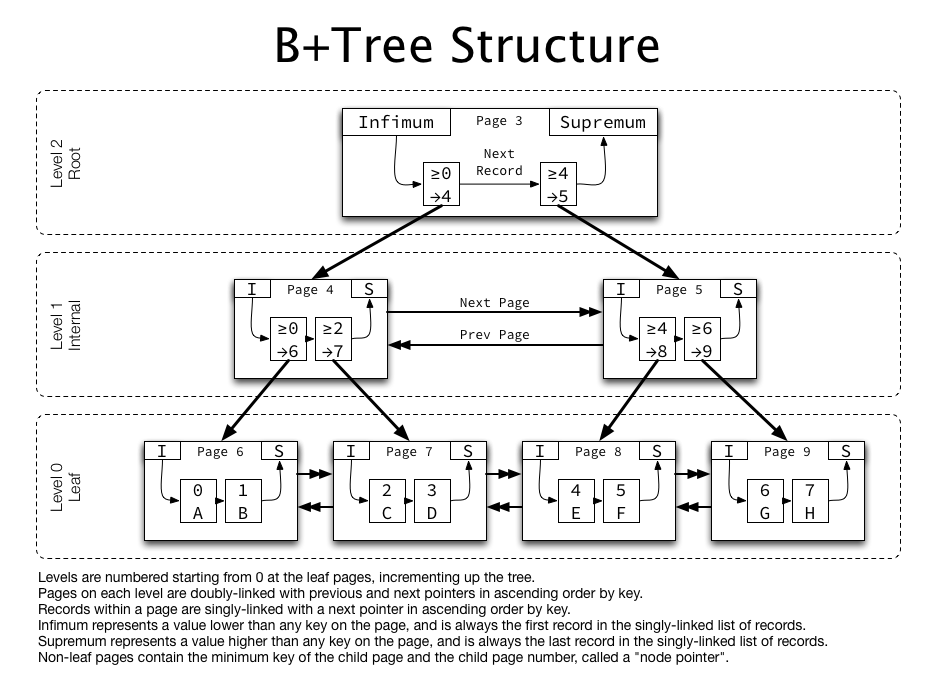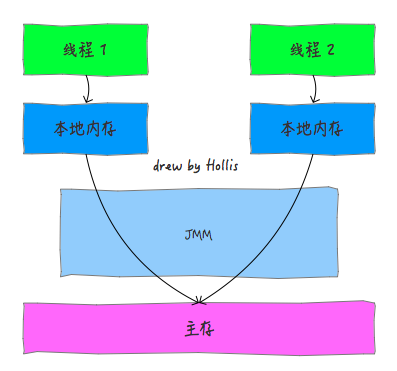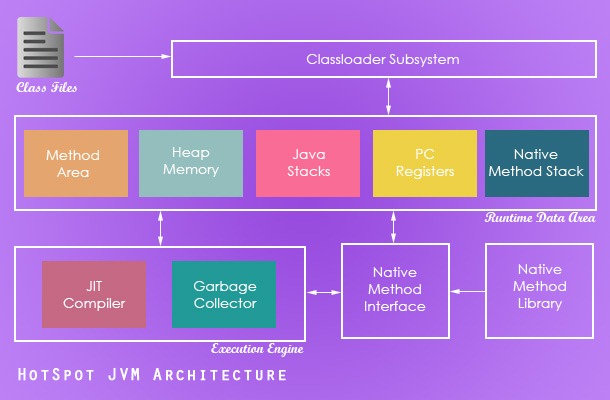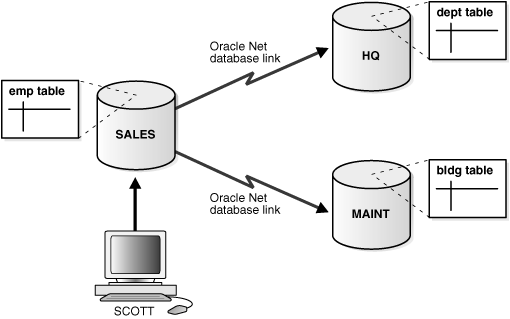参考刷题指南 GitHub-CyC2018/Leetcode题解之链表
超高复杂度的暴力遍历:
1 2 3 4 5 6 7 8 9 10 11 12 13 14 15 16 17 18 public class Solution public ListNode getIntersectionNode (ListNode headA, ListNode headB) if (headA == null || headB == null ) return null ; ListNode B = headB; while (headA != null ){ while (headB !=null ){ if (headA == headB) return headA; else headB = headB.next; } headA = headA.next; headB = B; } return null ; } }
双指针技巧:
当访问 A 链表的指针访问到链表尾部时,令它从链表 B 的头部开始访问链表 B;同样地,当访问 B 链表的指针访问到链表尾部时,令它从链表 A 的头部开始访问链表 A。这样就能控制访问 A 和 B 两个链表的指针能同时访问到交点。如果不存在交点,那么 a + b = b + a,会同时到达链表尾部的 null,从而退出循环。
两个人速度一致, 走过的路程一致。那么肯定会同一个时间点到达终点。如果到达终点的最后一段路两人都走的话,那么这段路上俩人肯定是肩并肩手牵手的。
1 2 3 4 5 6 7 8 9 10 11 12 13 14 15 16 public class Solution public ListNode getIntersectionNode (ListNode headA, ListNode headB) ListNode curA = headA; ListNode curB = headB; while (curA != curB){ if (curA != null ) curA = curA.next; else curA = headB; if (curB != null ) curB = curB.next; else curB = headA; } return curA; } }
递归:
学习:labuladong讲的递归反转链表专题
1 2 3 4 5 6 7 8 9 class Solution public ListNode reverseList (ListNode head) if (head == null || head.next == null ) return head; ListNode last = reverseList(head.next); head.next.next = head; head.next = null ; return last; } }
迭代:
在遍历链表时,将当前节点的 next 指针改为指向前一个节点。由于节点没有引用其前一个节点,因此必须事先存储其前一个节点。在更改引用之前,还需要存储后一个节点。最后返回新的头引用。
1 2 3 4 5 6 7 8 9 10 11 12 13 14 15 class Solution public ListNode reverseList (ListNode head) ListNode prev = null ; ListNode cur = head; while (cur != null ){ ListNode nextTemp = cur.next; cur.next = prev; prev = cur; cur = nextTemp; } return prev; } }
1 2 3 4 5 6 7 8 9 10 11 12 13 14 15 16 17 18 19 20 21 22 23 class Solution public ListNode reverseBetween (ListNode head, int left, int right) if (left == 1 ) return reverseN(head, right); head.next = reverseBetween(head.next, left - 1 , right - 1 ); return head; } ListNode after = null ; ListNode reverseN (ListNode head, int n) { if (n == 1 ) { after = head.next; return head; } ListNode last = reverseN(head.next, n - 1 ); head.next.next = head; head.next = after; return last; } }
参考labuladong教程:如何k个一组反转链表
1 2 3 4 5 6 7 8 9 10 11 12 13 14 15 16 17 18 19 20 21 22 23 24 25 26 27 class Solution public ListNode reverseKGroup (ListNode head, int k) if (head == null ) return null ; ListNode a = head, b = head; for (int i = 0 ; i < k; i++){ if (b == null ) return head; b = b.next; } ListNode newHead = reverse(a, b); a.next = reverseKGroup(b, k); return newHead; } ListNode reverse (ListNode a, ListNode b) { ListNode pre = null , cur = a, nxt = a; while (cur != b){ nxt = cur.next; cur.next = pre; pre = cur; cur = nxt; } return pre; } }
参考labuladong教程:如何高效判断回文链表
最暴力法,把链表整个翻转后两个链表一一比对:
1 2 3 4 5 6 7 8 9 10 11 12 13 14 15 16 17 18 19 20 21 22 23 24 25 26 27 28 29 30 31 32 33 34 35 36 37 38 39 class Solution public boolean isPalindrome (ListNode head) ListNode headTemp = copyList(head); ListNode re = reverse(headTemp); while (head != null ){ if (re.val != head.val) return false ; re = re.next; head = head.next; } return true ; } ListNode reverse (ListNode head) { if (head == null || head.next == null ) return head; ListNode last = reverse(head.next); head.next.next = head; head.next = null ; return last; } ListNode copyList (ListNode head) { if (head == null ) return null ; ListNode newCur = new ListNode(head.val, null ); ListNode newHead = newCur, cur = head; while (cur.next != null ){ ListNode newNode = new ListNode(cur.next.val, null ); newCur.next = newNode; newCur = newCur.next; cur = cur.next; } return newHead; } }
之所以需要copyList这个方法是因为ListNode headTemp = head;并不能拷贝一个全新的链表,以至于在reverse方法里无论传入head还是headTemp到最后都会破坏链表结构,因此无法从re跟head开始同时遍历比较。参考:Java如何完全复制一个对象
所以下面第三种找中点后翻转后半部分的方法,没有破坏前半部分的链表结构,则可以直接ListNode right = reverse(slow);接收翻转后的头结点,进行比较。
递归倒序遍历单链表:
1 2 3 4 5 6 7 8 9 10 11 12 13 14 15 16 17 18 19 20 class Solution ListNode left; public boolean isPalindrome (ListNode head) left = head; return reverse(head); } boolean reverse (ListNode right) if (right == null ) return true ; boolean flag = reverse(right.next); flag = flag && (right.val == left.val); left = left.next; return flag; } }
快慢指针找中点,反转后半部分链表,减少空间复杂度:
1 2 3 4 5 6 7 8 9 10 11 12 13 14 15 16 17 18 19 20 21 22 23 24 25 26 27 28 29 30 31 32 class Solution public boolean isPalindrome (ListNode head) ListNode slow = head, fast = head; while (fast != null && fast.next != null ){ slow = slow.next; fast = fast.next.next; } if (fast != null ) slow = slow.next; ListNode left = head; ListNode right = reverse(slow); while (right != null ){ if (left.val != right.val) return false ; left = left.next; right = right.next; } return true ; } ListNode reverse (ListNode head) { if (head == null || head.next == null ) return head; ListNode last = reverse(head.next); head.next.next = head; head.next = null ; return last; } }
1 2 3 4 5 6 7 8 9 10 11 12 13 14 class Solution public ListNode mergeTwoLists (ListNode l1, ListNode l2) if (l1 == null || l2 == null ) return l1 == null ? l2 : l1; if (l1.val > l2.val){ l2.next = mergeTwoLists(l2.next, l1); return l2; } else { l1.next = mergeTwoLists(l1.next, l2); return l1; } } }
1 2 3 4 5 6 7 8 9 10 11 12 13 14 15 16 class Solution public ListNode deleteDuplicates (ListNode head) if (head == null ) return null ; ListNode cur = head; while (cur != null && cur.next != null ){ if (cur.val == cur.next.val){ while (cur.next != null && cur.val == cur.next.val) cur.next = cur.next.next; } cur = cur.next; } return head; } }
递归解法:
1 2 3 4 5 6 7 8 9 10 class Solution public ListNode deleteDuplicates (ListNode head) if (head == null || head.next == null ) return head; head.next = deleteDuplicates(head.next); if (head.val == head.next.val) return head.next; else return head; } }
1 2 3 4 5 6 7 8 9 10 11 12 13 14 15 16 17 18 19 20 class Solution public ListNode removeNthFromEnd (ListNode head, int n) ListNode slow = head, fast = head; for (int i = 0 ; i < n; i++) fast = fast.next; if (fast == null ) return slow.next; while (fast.next != null ){ fast = fast.next; slow = slow.next; } ListNode pre = slow; slow = slow.next; pre.next = slow.next; return head; } }
直接套用k个一组翻转链表的代码(k=2):
1 2 3 4 5 6 7 8 9 10 11 12 13 14 15 16 17 18 19 20 21 22 23 24 25 26 27 28 29 30 31 32 class Solution public ListNode swapPairs (ListNode head) head = reverseKGroup(head, 2 ); return head; } ListNode reverseKGroup (ListNode head, int k) { if (head == null ) return null ; ListNode a = head, b = head; for (int i = 0 ; i < k; i++){ if (b == null ) return head; b = b.next; } ListNode newHead = reverse(a, b); a.next = reverseKGroup(b, k); return newHead; } ListNode reverse (ListNode a, ListNode b) { ListNode pre = null , cur = a, nxt = a; while (cur != b){ nxt = cur.next; cur.next = pre; pre = cur; cur = nxt; } return pre; } }
同样的思路,简化版:
1 2 3 4 5 6 7 8 9 10 11 12 13 14 15 16 17 class Solution public ListNode swapPairs (ListNode head) if (head == null || head.next == null ) return head == null ? null : head; ListNode a = head, b = head.next.next; ListNode newHead = swap(a, a.next); a.next = swapPairs(b); return newHead; } ListNode swap (ListNode a, ListNode b) { a.next = b.next; b.next = a; return b; } }
1 2 3 4 5 6 7 8 9 10 11 12 13 14 15 16 17 18 19 20 21 22 23 24 25 26 27 28 29 30 31 32 33 34 35 class Solution public ListNode addTwoNumbers (ListNode l1, ListNode l2) int add = 0 ; ListNode cur = new ListNode(); ListNode head = cur, pre = null ; while (l1 != null || l2 != null ){ int val1 = 0 , val2 = 0 ; if (l1 != null ) val1 = l1.val; if (l2 != null ) val2 = l2.val; if (val1 + val2 + add >= 10 ){ cur.val = val1 + val2 + add - 10 ; add = 1 ; } else { cur.val = val1 + val2 + add; add = 0 ; } ListNode nxt = new ListNode(); cur.next = nxt; pre = cur; cur = cur.next; if (l1 != null ) l1 = l1.next; if (l2 != null ) l2 = l2.next; } if (add == 1 ) cur.val = add; else pre.next = null ; return head; } }
暴力翻转链表后做按位加法然后再转回来:
1 2 3 4 5 6 7 8 9 10 11 12 13 14 15 16 17 18 19 20 21 22 23 24 25 26 27 28 29 30 31 32 33 34 35 36 37 38 39 40 41 42 43 44 45 46 47 48 49 50 51 52 53 54 55 56 57 58 59 60 61 62 63 64 65 66 67 68 69 70 71 72 73 class Solution public ListNode addTwoNumbers (ListNode l1, ListNode l2) ListNode rel1 = reverse(l1), rel2 = reverse(l2); boolean flag = false ; ListNode head = new ListNode(0 ); ListNode cur = head; while (rel1 != null || rel2 != null ){ int add; if (flag) add = 1 ; else add = 0 ; if (rel1 == null ){ if (rel2.val + add >= 10 ){ flag = true ; cur.val = rel2.val - 10 + add; } else { flag = false ; cur.val = rel2.val + add; } rel2 = rel2.next; } else if (rel2 == null ){ if (rel1.val + add >= 10 ){ flag = true ; cur.val = rel1.val - 10 + add; } else { flag = false ; cur.val = rel1.val + add; } rel1 = rel1.next; } else { if (rel1.val + rel2.val + add >= 10 ){ flag = true ; cur.val = rel1.val + rel2.val - 10 + add; } else { flag = false ; cur.val = rel1.val + rel2.val + add; } rel1 = rel1.next; rel2 = rel2.next; } ListNode nxt = new ListNode(0 ); cur.next = nxt; cur = cur.next; } if (!flag){ ListNode newHead = reverse(head); return newHead.next; } else { cur.val = 1 ; ListNode newHead = reverse(head); return newHead; } } ListNode reverse (ListNode head) { if (head == null || head.next == null ) return head; ListNode last = reverse(head.next); head.next.next = head; head.next = null ; return last; } }
输入链表不能修改的条件下,用栈解决,把所有数字压入栈中再依次取出相加:
!!对于链表逆序处理应该首先想到栈!!
1 2 3 4 5 6 7 8 9 10 11 12 13 14 15 16 17 18 19 20 21 22 23 24 25 26 27 28 29 30 31 32 33 34 35 36 37 38 39 40 41 42 43 44 45 46 47 48 class Solution public ListNode addTwoNumbers (ListNode l1, ListNode l2) Stack<Integer> l1Val = new Stack<>(); Stack<Integer> l2Val = new Stack<>(); while (l1 != null ){ l1Val.push(l1.val); l1 = l1.next; } while (l2 != null ){ l2Val.push(l2.val); l2 = l2.next; } int add = 0 ; ListNode cur = new ListNode(); while (!l1Val.isEmpty() || !l2Val.isEmpty()){ int val1 = 0 , val2 = 0 ; if (l1Val.isEmpty() && !l2Val.isEmpty()) val2 = l2Val.pop(); else if (l2Val.isEmpty() && !l1Val.isEmpty()) val1 = l1Val.pop(); else { val1 = l1Val.pop(); val2 = l2Val.pop(); } if (val1 + val2 + add >= 10 ){ cur.val = val1 + val2 - 10 + add; add = 1 ; } else { cur.val = val1 + val2 + add; add = 0 ; } ListNode pre = new ListNode(); pre.next = cur; cur = pre; } if (add == 1 ) { cur.val = 1 ; return cur; } else return cur.next; } }
1 2 3 4 5 6 7 8 9 10 11 12 13 14 15 16 17 18 19 20 21 22 23 24 25 26 27 28 29 30 31 32 33 34 35 36 37 38 39 40 41 42 43 class Solution public ListNode[] splitListToParts(ListNode root, int k) { int N = getLength(root); ListNode[] result = new ListNode[k]; ListNode cur = root; for (int i = 0 ; i < k; i++){ if (cur != null ) result[i] = cur; else result[i] = null ; if (i < N%k){ for (int j = 0 ; j < N/k; j++){ cur = cur.next; if (cur == null ) break ; } } else { for (int j = 0 ; j < N/k - 1 ; j++){ cur = cur.next; if (cur == null ) break ; } } if (cur != null ){ ListNode temp = cur.next; cur.next = null ; cur = temp; } } return result; } int getLength (ListNode root) int l = 0 ; while (root != null ){ l++; root = root.next; } return l; } }
1 2 3 4 5 6 7 8 9 10 11 12 13 14 15 16 17 class Solution public ListNode oddEvenList (ListNode head) if (head == null || head.next == null ) return head; ListNode odd = head, even = head.next, evenHead = head.next; while (even != null && even.next != null ){ odd.next = odd.next.next; even.next = even.next.next; odd = odd.next; even = even.next; } odd.next = evenHead; return head; } }





